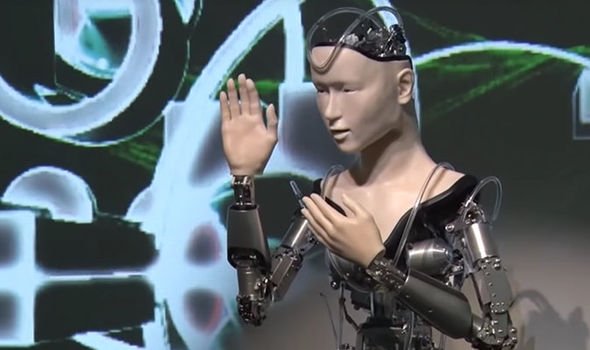According to a recent research study. Even though it may seem ridiculous to some, every religious organisation relies on its members to keep it running. Many people consistently work to maintain and spread religion, from priests to preachers.
 However, a research indicated that they may diminish the legitimacy of religious organisations that depend on them and decrease contributions. Robot preachers and AI programmes provide new means of conveying views.
However, a research indicated that they may diminish the legitimacy of religious organisations that depend on them and decrease contributions. Robot preachers and AI programmes provide new means of conveying views.
AI in Theology
At the Kodai-Ji Buddhist temple in Kyoto, a humanoid robot named Mindar has a silicone face that moves its lips and blinks its eyes. It is used to give lectures on Buddhist philosophy based on the Heart Sutra, which last 25 minutes and include a light and sound display. It was developed in 2019 for close to $1 million by a Japanese robotics company that collaborated with the temple.
However, the investigation discovered that the price was much higher—the robot may be lowering temple contributions. 398 people who had just heard a prayer led by either Mindar or a human priest and were leaving the temple were polled. The former contributed less money than those who heard from a human priest since they didn’t trust Mindar as much.
The findings of a poll performed at a Taoist temple in Singapore were mostly consistent. A humanoid robot named Pepper presented the sermon to half of the 239 attendees, while the other half listened to a priest who was human. Once again, the robot’s lack of credibility led to fewer contributions. The audience members who listened to the robot sermon also said that they were less inclined to spread its message or hand out fliers to promote the temple.
Further west, the third experiment was carried out. A sermon was read online by 274 Christian volunteers from the United States. They were divided into two groups: those who were told it was written by a human preacher and those who were told it was produced by a highly developed AI programme. Because they believed an AI programme had less ability to think or feel like a person, the second group said that they found it to be less believable.
“Our final study was conducted right as ChatGPT was released, which was a great opportunity to test how people may react when they learn that sermons were written by large language models rather than by humans,” said Joshua Conrad Jackson, the study’s first author, in an email to indianexpress.com.
“Our research suggests that people feel less commitment towards their religious identity and their place of worship when sermons are composed by LLMs, suggesting that preachers who use ChatGPT to write sermons may alienate their congregants (unless they can keep their source of inspiration a secret),” the author continued.
Does this apply to all major religions ?
Tensho Goto, a steward of the Kodaiji temple, explained to Deutsche Welle in 2020 why Buddhism is the ideal ideology for a robotic preacher. According to Christianity, God created man. Therefore, making a human being would be similar to creating Frankenstein. Therefore, it would be wrong for man to construct God. We think differently from how God is seen in the West. In the west, there is a belief in the existence of God. We don’t know if God exists or not in Buddhism,” Goto remarked. He continued by saying that Buddhism is a “empirical” faith and that practitioners only trust in what they can really see and feel.
However, as the research shown, Goto may have been a little hasty in his forecasts concerning Buddhism and AI or robots. It also informed us that Christians and Taoists seemed to experience the same thing. What about the two major faiths in India, Hinduism and Islam? Jackson is certain that the findings of the research will also apply there.

“I agree with Tensho and would add that Japan has the highest level of support for robotics of any country in the world. Given these figures, it appears conceivable that our findings would apply even more strongly to Hindus or Muslims residing in other nations, the researcher added.
Why does this matter ?
To get young people back into the religious fold, one of the goals of bringing Mindar to the Kodai-ji temple. In 41 nations, younger persons are less likely than older ones to identify with any religious organisation, according to a 2018 Pew Research Centre poll. (In India, there was no difference between those over and under 40).
However, this research demonstrates that exposure to robot priests like Mindar may weaken religious adherence among those who identify as religious. Jackson interprets this to suggest that in the future, houses of worship may have to decide whether to use robots or AI preachers to draw in younger people while also risking a decline in congregant commitment.
Religious elites such as priests, preachers, shamans, and others have acted as cultural role models. They embody and validate the teachings of their religion rather than just repeating them. Theories of religion suggest that these religious leaders may have had a significant impact on religious organisations’ ability to compel strong levels of devotion from their adherents. AI and robots could just fall short.
1 thought on “One industry where humans may always be better than AI”